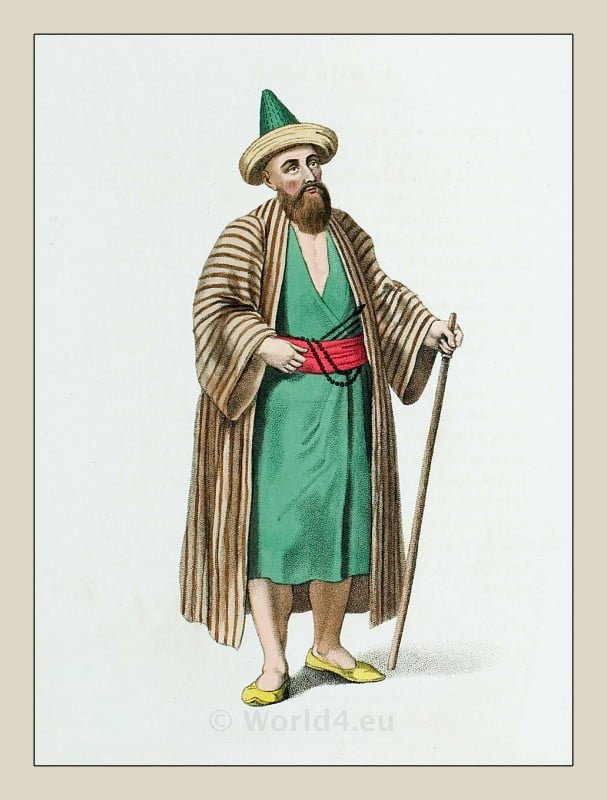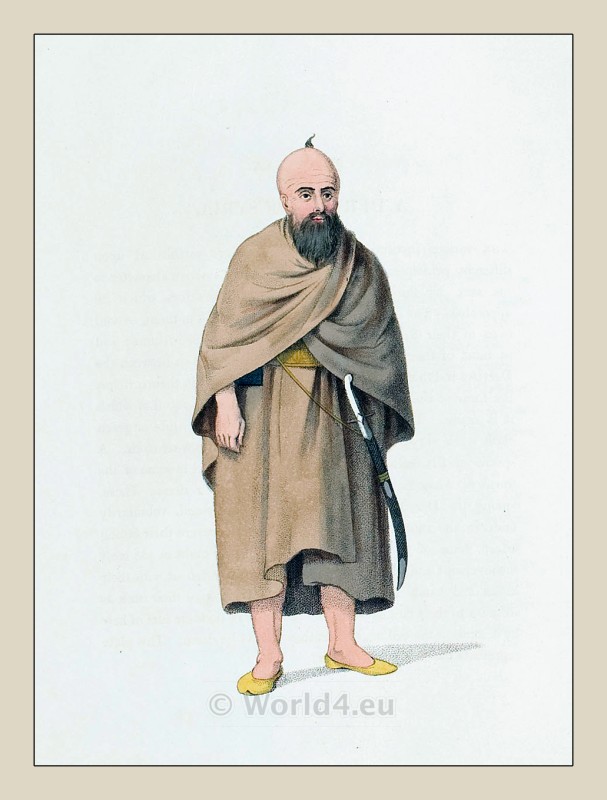Persian dervish in 1840.
Derviche persan. Source: Asian costumes by Auguste Wahlen. Manners, customs and costumes of all peoples of the world.
Sufism.
Sufism is a collective term for movements in Islam that have ascetic tendencies and a spiritual orientation, often referred to by the word mysticism. A follower of Sufism is called a Sufist, a Sufi practitioner or dervish. Core elements of the various practical and theoretical teachings often include a unity of all that exists, an “inner meaning” of the Qur’an, an individual closeness or immediacy to God, as well as corresponding exemplary Qur’anic verses and normative traditional sayings and biographical reports on Mohammed.
Until the 9th century the Sufis were an ascetic fringe group in today’s Iraq. From the 10th century onwards, systematic handbooks on the spiritual path of the Sufi were developed, which emphasize the proximity to orthodox Sunniism.
For the systematic formulation of theology and epistemology philosophers and theologians such as al-Ghazālī, Suhrawardi and Ibn Arabi were formative. In the 12th century Sufi orders were formed, which also had religious-political functions, including the organization of popular piety and mission. Sufism has been one of the most important factors in history in attracting non-Muslims to Islam.
At the latest with the organization in orders an identification of mysticism and Sufism is problematic, since the former usually refers to a specific type of spirituality, the latter however now to institutions. The terms sufiya and tasawwuf are contrasted with the expression ‘irfān (عِرْفَان), literally gnosis, meaning “mysticism”. The word Sufism has only been used in Europe since the 19th century.
Continuing
Discover more from World4 Costume Culture History
Subscribe to get the latest posts sent to your email.







